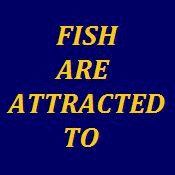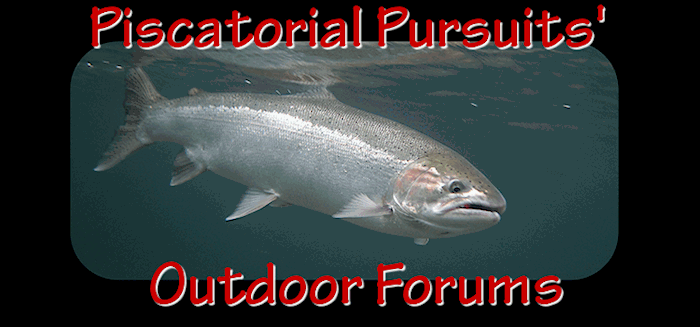FACT SHEET
WASHINGTON DEPARTMENT OF FISH AND WILDLIFE
600 Capitol Way North, Olympia, WA 98501-1091
April 2003
Contact: Tim Waters, (360) 902-2262 or
Doug Williams, (360) 902-2256
Lawsuits alleging Puget Sound
hatchery operations hamper chinook
recovery are unfounded
Contrary to allegations filed in recent lawsuits by the group Washington Trout, releases of hatchery-bred chinook, coho and steelhead are not hampering recovery efforts for threatened Puget Sound wild chinook. The allegations also fail to acknowledge the substantial actions taken in recent years by state, federal and tribal resource managers to ensure hatchery operations support chinook recovery.
Since Puget Sound wild chinook were listed as threatened in 1999 under the Endangered Species Act (ESA), the Washington Department of Fish and Wildlife has been working in tandem with the federal NOAA Fisheries, treaty tribes, local governments, the scientific community, conservation groups, citizen-volunteers and others to put in place a comprehensive, science-based recovery plan.
This recovery plan is being crafted at the same time the Department has been a key participant in the collaborative processes established to achieve recovery objectives. Those processes include the four-year-old Shared Strategy for Puget Sound, as well as the three-year-old Puget Sound and Coastal Washington and Hatchery Reform Project launched by Congress in 2000. Both efforts are supported by community and political leaders at the federal, state and local level.
The legal actions against the Department were filed even though the agency is adhering to all federal requirements under the ESA for hatchery operations and wild chinook recovery. If the litigation is successful, millions of young coho and steelhead would have to be killed, and Puget Sound fisheries would be dramatically reduced for many years.
"It is unfortunate that legal actions have been filed that erroneously allege releases of hatchery-produced fish jeopardize wild chinook recovery," said Washington Department of Fish and Wildlife (WDFW) Director Dr. Jeff Koenings. "The truth is that we have been making unprecedented progress toward wild chinook recovery, and we are currently doing it in a highly collaborative manner. I am optimistic that we can extend this approach to working with Washington Trout outside the confrontational atmosphere of litigation."
The Department presently operates more than 60 chinook, coho and steelhead hatcheries and rearing ponds in Puget Sound. The hatcheries are ongoing mitigation for fish spawning habitat lost to dam construction and other environmental changes due to development. In addition, the Puget Sound hatchery facilities assist the state in meeting its obligations to treaty tribes under federal law.
The fish produced by all of these facilities are the backbone of Puget Sound recreational and commercial fisheries, and are both culturally and economically important to the region. The fisheries provide jobs and generate hundreds of millions of dollars annually in spending, primarily through angler expenditures.
In addition, some Puget Sound chinook hatchery stocks have been identified as essential for recovery purposes.
While recovery work is in the early stages and is expected to take years to complete, recent surveys indicate that the number of Puget Sound wild chinook reaching spawning grounds is increasing. The increase is believed to be due in part to favorable ocean conditions, but recovery actions such as changes in fisheries management policies and hydro-power operations also are believed responsible.
As part of the wild chinook recovery effort, WDFW, guided by the work of its Fisheries Science Division, has made substantial changes in both harvest and hatchery practices to ensure they are consistent with all recovery goals and meet or exceed ESA mandates.
With regard to hatchery practices, which is the focus of the legal claims, WDFW and its co-managers have:
Completed Hatchery Genetic Management Plans (HGMPs) for all chinook, coho, chum, pink, sockeye and steelhead-rearing facilities in Puget Sound, Hood Canal and the eastern half of the Strait of Juan de Fuca. The plans, which have been submitted to NOAA Fisheries as part of the ongoing ESA process, provide comprehensive descriptions of hatchery operations and the potential effects they could have on ESA- listed fish populations.
Completed and submitted to NOAA Fisheries, in conjunction with treaty tribes, the first comprehensive Resource Management Plan (RSM) for WDFW and tribal Puget Sound chinook hatcheries. The plan provides a scientific framework for all chinook hatchery operations to insure wild stock recovery and sustainable fisheries on hatchery-produced fish can occur. The Department has also completed, in conjunction with the tribes, coho and steelhead RSMs.
Instituted precautionary reductions of hatchery-origin chinook, coho and steelhead in some Puget Sound watersheds with indigenous chinook populations.
Are in the process of eliminating the use of non-local stocks for Puget Sound hatchery programs involving the use of locally-adapted broodstock for hatchery operations.
Eliminated chinook net pen fish operations to end the straying of returning adults into streams.
Altered the release times and locations of hatchery origin fish to minimize ecological interactions, including producing smolt-sized juvenile salmon that go directly to sea.
Completed scientific research focusing on the impact of juvenile hatchery chinook salmon on wild juvenile salmon populations. Three studies on three different river systems in northwestern, southwestern and central Washington have thus far been completed, and more are planned on other river systems. The completed studies indicated no juvenile wild stock predation by juvenile hatchery steelhead and coho.
Besides these efforts, the Department, along with treaty tribes and federal fisheries officials, also continues to play a major role in the Puget Sound and Coastal Washington Hatchery Reform Project launched by Congress in 2000. The project, led by a panel of independent scientists, is working to apply a comprehensive, science-based framework to both Puget Sound hatcheries and coastal hatcheries to insure the facilities meet the dual goal of wild stock recovery and sustainable fisheries.
In addition, the Department continues to participate in the Shared Strategy for Puget Sound, a collaborative effort designed to draft practical recovery strategies by engaging local citizens, governments, policymakers and others. The effort is backed by Governor Locke as well as state and local lawmakers.
"As I have said before, collaborative processes are the only way to solve highly complicated natural resource issues," Koenings said. "I am confident that those processes can work here and we can move forward and ensure hatchery operations support both naturally spawning chinook recovery and sustainable fisheries."
--------------------------------------------------------------------------------
Washington Department of Fish and Wildlife
Puget Sound Chinook Recovery Timeline
1977 – WDFW begins using selected hatcheries for wild stock restoration projects.
1993 – WDFW and tribes jointly complete a Salmonid Stock Inventory (SASI) identifying unique fish stocks throughout the state and providing baseline information on the health status of each stock.
1995 – WDFW begins scientific research to specifically determine the impacts of hatchery-origin salmon on naturally spawning chinook stocks.
1998 – WDFW begins mass-marking hatchery chinook production throughout Puget Sound. Clipping the adipose fin from hatchery-bred chinook allows anglers to identify hatchery stocks from wild stocks, allowing WDFW to set mark-selective fisheries.
1999 – Puget Sound chinook salmon listed as threatened under the federal Endangered Species Act
1999 – WDFW, the tribes and federal fisheries officials jointly launch the Hatchery Reform Project. Funded by Congress, the project is led by a panel of independent scientists and applies a science-based framework to Puget Sound and coastal hatcheries, ensuring they meet stock recovery and sustainable fisheries goals.
2001 – WDFW and treaty Indian tribes jointly submit Hatchery Genetic Management Plans to NOAA Fisheries. The plans, required under ESA rules, describe the structures and methodologies used to operate hatcheries.
2001 WDFW joins with the Shared Strategy for Puget Sound, a collaborative effort between local governments, public agencies, private groups and others to develop practical Puget Sound recovery strategies. The strategy is backed by Governor Locke and other state and local leaders.
2002 – WDFW and treaty Indian tribes jointly complete a comprehensive Resource Management Plan for chinook hatchery operations and submit it to NOAA Fisheries for ESA compliance. The plan provides a blueprint for hatchery operations and hatchery production levels consistent with chinook recovery.
2003 – WDFW and treaty Indian tribes jointly complete comprehensive Resource Management Plans for coho and steelhead hatcheries for ESA compliance.














 Previous Topic
Previous Topic Index
Index

